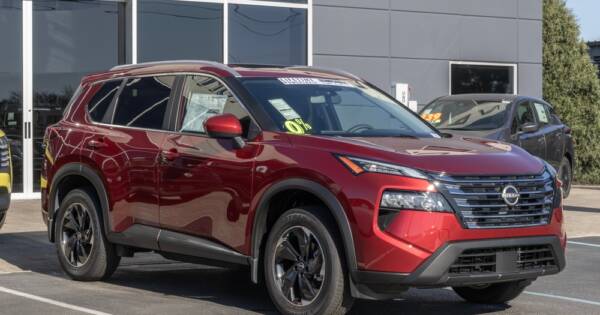Buying a car is a significant financial decision, and for many people, paying in full upfront is not an option. Fortunately, there are multiple ways to finance a car, each with its own benefits and considerations. Whether you are purchasing a new or used vehicle, understanding your financing options can help you make the best choice for your budget and financial situation.
1. Auto Loans from Banks and Credit Unions
One of the most common ways to finance a car is through an auto loan from a bank or credit union. These institutions offer fixed-term loans with set interest rates, allowing borrowers to make monthly payments over time.
Benefits
- Interest rates may be lower than dealership financing, especially for those with good credit.
- Loan terms are flexible, typically ranging from 36 to 72 months.
- Credit unions often offer lower rates than banks, especially for members.
Things to Consider
- Requires a credit check, and rates are influenced by credit history.
- A down payment may be required to secure better loan terms.
2. Dealership Financing
Many car dealerships offer in-house financing or work with lending partners to provide auto loans directly to buyers. This option is convenient because buyers can secure financing at the same time they purchase their vehicle.
Benefits
- Quick and convenient, as financing is arranged on-site.
- Promotional offers such as zero percent interest or cashback deals may be available.
- Easier approval process for individuals with lower credit scores.
Things to Consider
- Interest rates may be higher compared to bank or credit union loans.
- Loan terms and conditions may include additional fees or hidden costs.
- Limited flexibility in negotiating loan terms.
3. Leasing a Car
Leasing is another financing option that allows individuals to drive a new car for a fixed period, typically two to four years, with lower monthly payments compared to buying. At the end of the lease, the car can either be returned or purchased at a predetermined price.
Benefits
- Lower monthly payments compared to financing a purchase.
- The ability to drive a new car every few years.
- Maintenance and repair costs may be covered under warranty.
Things to Consider
- No ownership of the car unless purchased at the end of the lease.
- Mileage restrictions apply, and exceeding limits results in extra fees.
- Wear and tear fees may be charged at the end of the lease term.
4. Personal Loans
For buyers who want more flexibility, using a personal loan to finance a car is another option. Personal loans are unsecured, meaning they do not require the vehicle as collateral.
Benefits
- Can be used to buy a car from private sellers.
- No restrictions on the type or age of the vehicle.
- Loan terms and repayment schedules are flexible.
Things to Consider
- Interest rates may be higher than auto loans.
- Approval depends on credit history and income.
- Not all lenders offer personal loans for vehicle purchases.
5. Manufacturer or Special Incentive Financing
Car manufacturers and dealerships frequently offer special financing programs, such as zero percent APR deals for qualified buyers. These programs are typically available for new cars and specific models.
Benefits
- Interest-free or low-interest financing can save thousands over time.
- Special promotions may include cashback offers or bonuses.
- Often available to buyers with strong credit scores.
Things to Consider
- Only available for select car models and limited-time promotions.
- Requires excellent credit to qualify for the best deals.
- May have stricter repayment terms compared to traditional loans.
6. Buy Here, Pay Here (BHPH) Financing
For individuals with poor credit or no credit history, some dealerships offer Buy Here, Pay Here (BHPH) financing, which allows buyers to get a car loan directly from the dealership.
Benefits
- Approval is easier for individuals with low credit scores.
- The loan process is quick, often allowing same-day approvals.
- May help build credit with consistent payments.
Things to Consider
- Interest rates are usually much higher than traditional loans.
- Vehicles may be more expensive than market value.
- Some dealerships install GPS trackers or disable vehicles for missed payments.
7. Paying with Cash or Savings
For buyers who can afford it, paying cash upfront is the most cost-effective way to purchase a car. By avoiding financing, buyers eliminate interest charges and monthly payments.
Benefits
- No interest payments, saving money over time.
- Full ownership of the car from the start.
- No credit check or loan approval required.
Things to Consider
- Requires significant savings or a large lump sum.
- May limit cash flow for other financial needs.
- Some dealerships offer better deals for financed purchases rather than cash buyers.
Choosing the Best Financing Option
Finding the right way to finance a car depends on individual financial circumstances, credit score, and long-term goals. Whether securing a bank loan, dealership financing, leasing, or paying cash, each option has its advantages and drawbacks.
Before making a decision, it’s important to compare loan terms, interest rates, and overall costs to ensure you are choosing the most affordable and practical financing solution for your situation.





